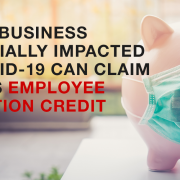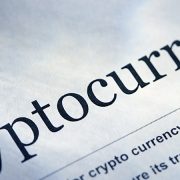4 Costly Myths Taxpayers Have About the IRS’s Offshore Voluntary Disclosure Program (OVDP)
People who have undisclosed income in offshore accounts can — and frankly, should — take advantage of the IRS’s Offshore Voluntary Disclosure Program (OVDP).
As the term suggests, the program allows taxpayers to voluntarily disclose all foreign accounts and fully clear their tax liability (including taxes owed, interest and penalties), instead of risk getting flagged in the future and paying much steeper price. While the IRS treats each case individually, penalties for failing to report offshore accounts start at 50 percent of the balance. Furthermore, if there is suspected fraud or tax evasion, criminal prosecutions can commence.
Although the OVDP has been around since 2009, there remains a significant amount of misinformation and misunderstanding regarding how it works — and just as importantly, how it doesn’t work. Here are four costly OVDP myths that persist:
Myth #1: Taxpayers are better off informing the IRS of undisclosed offshore accounts by amending their tax returns vs. using the OVDP.
Fact: Taxpayers who provide any disclosure of unreported foreign assets must be prepared to provide supporting information, such as bank statements. As such, reporting outside the OVDP is a categorical mistake that will not “fly under the radar screen.” The IRS can and will use the new information to develop a case against a taxpayer, which may (and likely will) lead to severe civil penalties and/or criminal prosecution.
Myth #2: Once a taxpayer enters into the OVDP, it is not possible to dispute the findings levied by the IRS after their investigation.
Fact: While remaining in the OVDP, taxpayers may contest and challenge the IRS’s findings. Agents can make mistakes, and some financial statements and other data may be open to interpretation.
Myth #3: Taxpayers who enter the OVDP expose themselves to having all of their tax returns open to examination.
Fact: The normal statute of limitations to examine a tax return is three years. However, it can be extended to six years in cases where there has been a substantial omission of income. And in cases where the IRS can show fraud, there is no statute of limitations.
Myth #4: Taxpayers who enter the OVDP must be prepared pay a penalty of 50 percent of the value of their undisclosed foreign assets.
Fact: The minimum penalty taxpayers are exposed to outside the OVDP is 50 percent of the balance (or value) of their undisclosed foreign assets. However, within the OVDP the maximum is 27.5 percent. This means taxpayers who wisely take advantage of the OVDP — while it is still being offered — will keep at least 72.5 percent of their foreign assets.
Moving Ahead
Buoyed by the Panama Papers and other high-profile investigations and revelations, the IRS is aggressively cracking down on taxpayers with undisclosed foreign assets. If this scenario applies to you — regardless of your motives for failing to disclose — the smartest and best thing you can do is consult with an attorney. Contact the Tax Law Offices of Jeffrey B. Kahn today to learn more about the OVDP and how it may benefit you. We can help you contact the IRS and proactively provide disclosure rather than risk having the IRS contact you.
For more information about how to deal with the IRS if you have offshore bank accounts, download our FREE eBook today:








 Follow
Follow Follow
Follow
